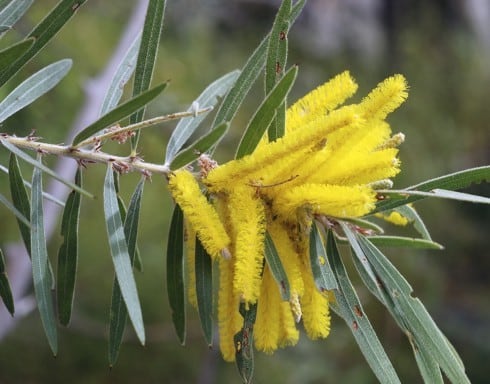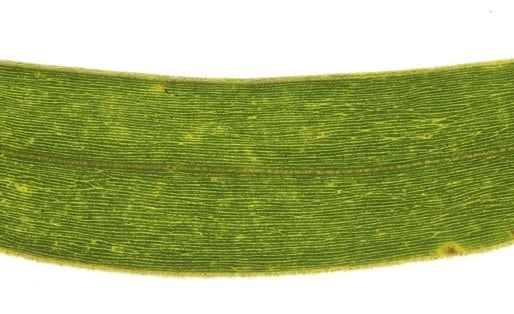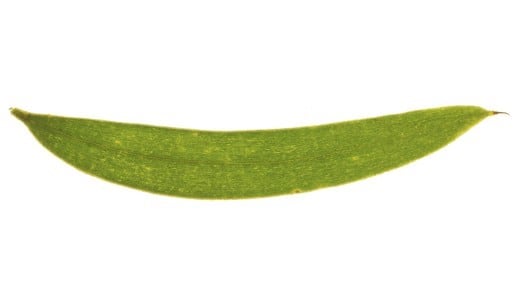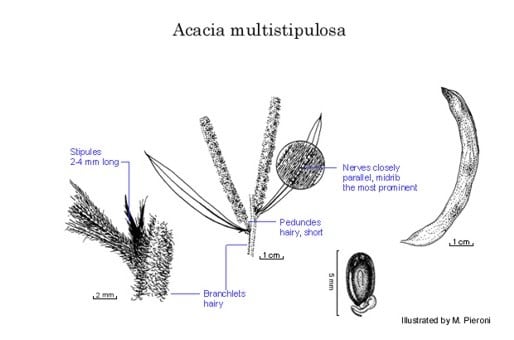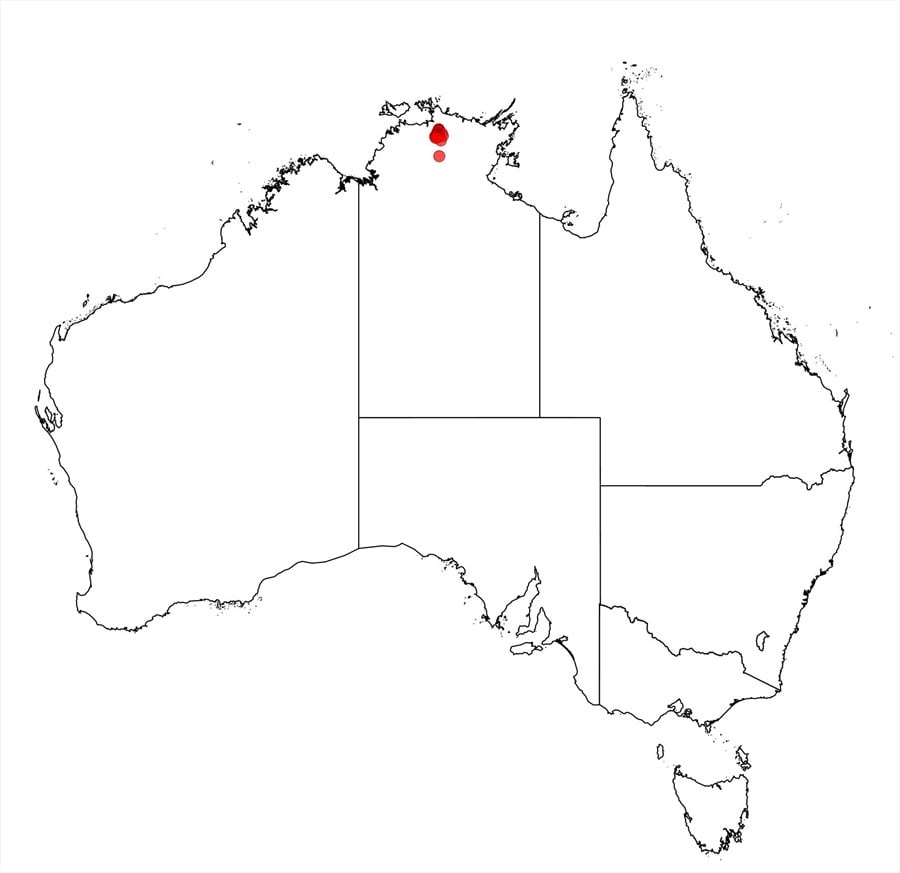Acacia multistipulosa Tindale & Bedward
WATTLE
Acacias of Australia
Family
Fabaceae
Distribution
Restricted to Kakadu Natl Park, N.T., between 12º32'S and 12º59'S.
Description
Shrub or tree to 10 m high, often spindly. Bark smooth, fissured in older trees, grey to brown or black. Branchlets terete, densely villous. Stipules very conspicuous, 3–7 mm long. Phyllodes narrowly elliptic to narrowly oblanceolate, apical point ±setose, straight to shallowly curved, 3.5–10.5 cm long, 4–8 mm wide, coriaceous, pubescent, appressed-hairy becoming glabrescent; longitudinal nerves numerous with midnerve more prominent than the rest, the minor nerves 8–13 per mm, crowded and not anastomosing; gland 1, basal, 5–10 mm above pulvinus. Inflorescences simple; peduncles 1–5 mm long, densely villous; spikes 2.4–9 cm long, bright yellow, densely villous when young; receptacle densely white villous. Flowers 5-merous; calyx 0.5–0.9 mm long, dissected to 2/3–3/4, villous; corolla 0.9–1.1 mm long, dissected to c. 1/2, villous; ovary usually glabrous or with apical hairs. Pods linear, ±flat, sometimes slightly twisted, 3.5–8 cm long, 4–7 mm wide, puberulous-scurfy, occasionally glabrous. Seeds oblique, ±elliptic, 3.6–4 mm long, dark brownish black; areole open, pale.
Phenology
Flowers Mar.–June.
Habitat
Grows in sandy soils on sandstone outliers, often on rocky ledges, usually amongst boulders in low open Eucalyptus -Triodia woodland.
Specimens
N.T.: Kakadu Natl Park, 2.5 km NW of Koongarra Saddle, I.R.Telford 8117 & J.W.Wrigley (BRI, CANB, NSW) and I.R.Telford 8443 & J.W.Wrigley (CANB, NSW); Koongarra Saddle, M.D.Tindale 10037 & P.Munns (AD, B, CANB, DNA, MEL, MO, PERTH, US).
Notes
Closely allied to A. conspersa from which it differs by its longer stipules clothed with hairs 0.3–0.7 mm long, by the bracteoles of the young spikes which are densely adorned with entangled or free hairs 0.3–0.7 mm long, and by the petals which are covered with hairs to 0.3 mm long on the outer surface and wider pods.
FOA Reference
Data derived from Flora of Australia Volumes 11A (2001), 11B (2001) and 12 (1998), products of ABRS, ©Commonwealth of Australia
Author
Dr M.D.Tindale and Dr P.G.Kodela with the assistance of M.Bedward, S.J.Davies, C.Herscovitch, D.A.Keith and/or D.A.Morrison
This identification key and fact sheets are available as a mobile application:
URL: https://apps.lucidcentral.org/wattle/
© Copyright 2018. All rights reserved.
